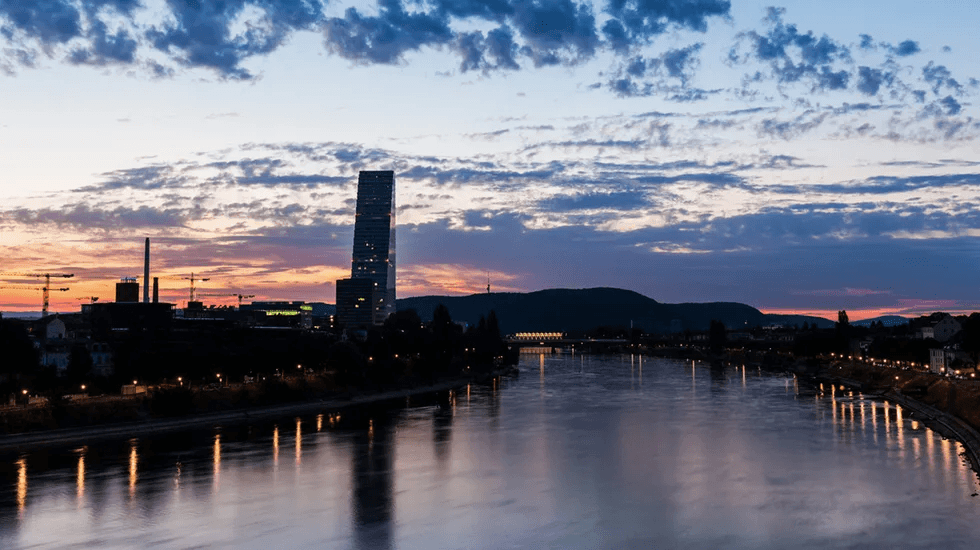Real estate Basel-City: A Real Estate Portfolio on the Way to CO₂ Neutrality
April 12, 2022

Switzerland’s building stock is currently responsible for around a quarter of the country’s CO₂ emissions. Real estate must therefore make a significant contribution if Switzerland is to achieve its goal of becoming CO₂ -neutral by 2050.
Immobilien Basel-Stadt (IBS) wanted to know exactly where the financial asset real estate portfolio of the canton of Basel-City, which comprises more than 300 properties, stood in terms of CO₂ emissions. The assignment was comprehensive: On the one hand, Wüest Partner was to determine how much CO₂ the properties currently emit as well as show how the goal of climate neutrality can be achieved by 2050. On the other hand, IBS was interested in how the portfolio’s CO₂ emissions have developed since 1990 until today and what it would mean if the net-zero target were to be achieved more quickly, for example, by 2040 or even earlier.
Wüest Climate played a very important role in this task. With the help of this tool, we were able to calculate the CO₂ emissions of the financial assets portfolio for each year from 1990 to 2050, taking into account the entire investment planning of IBS, including all foreseen maintenance measures, for future years.
Model calculations showed that the portfolio emitted just 7 kg of CO₂ equivalents per year and per m2 of energy reference area in 2020 – less than half of the Swiss building stock (16.2 kg). This good result is mainly due to the comprehensive district heating supply in the canton of Basel-City and the low number of oil-fired heating systems in the portfolio. In addition, the properties were regularly refurbished in terms of energy efficiency, which significantly reduced the heating requirements.
For the modeling of CO₂ emissions until 2050, it was assumed that as many properties as possible that are still heated with fossil fuels will be connected to the district heating network during the next heating system replacement. Properties without a district heating connection should be heated with other renewable energies (e.g. heat pumps) in the future. And where neither is possible, the CO₂ equivalents are to be achieved by overproducing renewable energy at other properties or by investing in external CO₂ compensation measures (e.g. certificates, climate protection projects).
Modeling of the renovations carried out to date has shown that the CO₂ emissions of the properties in the financial assets of the Canton of Basel-City have decreased by around 70% between 1990 and 2020. Immobilien Basel-City is thus even ahead of the reduction path envisaged by the Paris Climate Agreement. Since most decarbonization measures are planned for the years 2020 to 2040, CO₂ emissions will have reached a very low level, with barely 1 kg of CO₂ per m2 per year, as early as 2040. In other words: IBS could achieve near-zero CO₂ emissions from its real estate portfolio by 2040.
CO₂-reduction path of properties in the financial assets of the Canton of Basel-City
The continuous increase in renewable energy sources and the fluctuations in the energy mix for district heating in Basel were mapped using the published annual reports.
Explanation
- Each property is represented by a point.
- The larger the point, the greater the total CO₂ emissions of the property.
- The higher the point, the higher the CO₂ emissions per m2 .
- The further to the right the point, the less time has passed since the last energy refurbishment.
- The fluctuations in properties heated with district heating are due to the fact that, depending on the situation, the supply of district heating was not sufficient and different amounts of support from CO₂ -producing energy sources (mostly gas, in the past also oil) became necessary. Today, district heating in Basel-City offers two energy products, a more expensive CO₂-neutral product and a cheaper variant that is not completely CO₂ -neutral.
- Each time a property is converted to CO₂-free heating (district heating or heat pump), the corresponding point falls to the zero line. At the same time, the point usually also decreases, since energy-related renovations carried out at the same time reduce the property’s heat requirement.